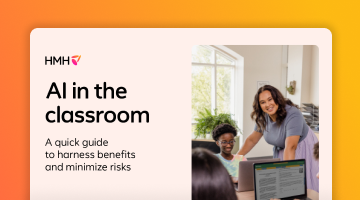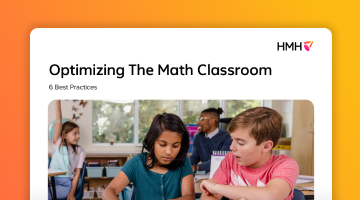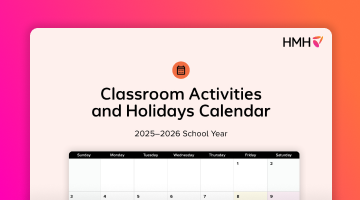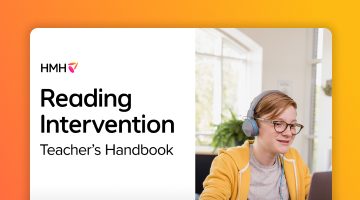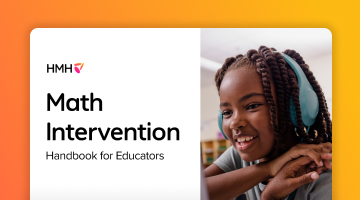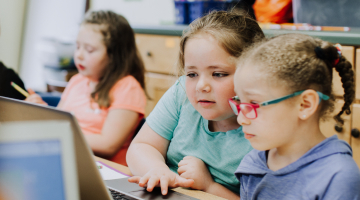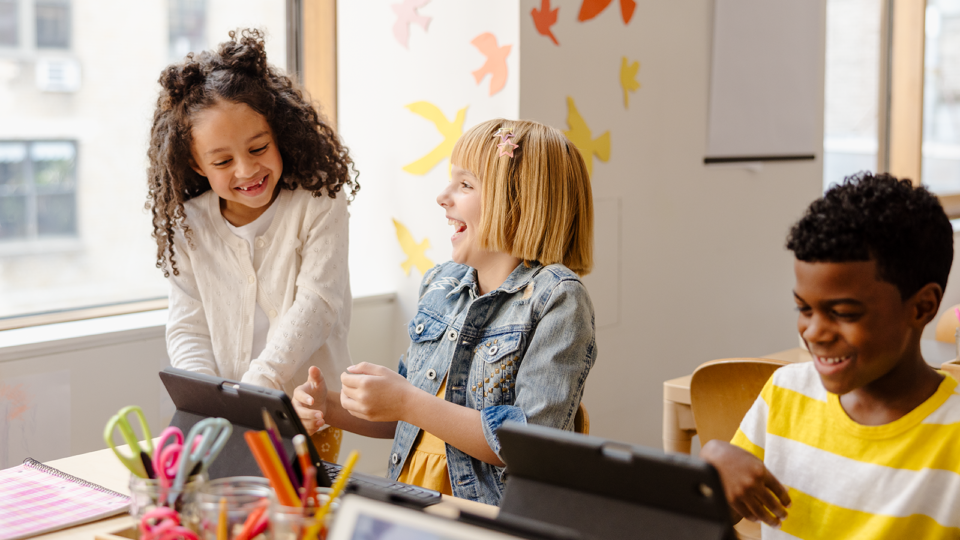
I did my elementary schooling in two languages: English and Spanish. As an English language learner (ELL), my mom hoped that being part of a bilingual program would help me learn English all while staying connected to mis raíces, my roots. So, school looked like “good mornings” and reading some days, and buenos días and lectura on other days.
Later in life when I became a teacher, I had a full circle moment. I was asked to teach one type of bilingual program: dual language immersion. In my dual language class, my students learned the power of multilingualism, not only as a means of communication but as a bridge between cultures.
Understanding dual language: Definition and goal of the program
Dual language, also known as dual language immersion, is a program in which students receive academic content instruction in two languages: English and a partner, or target, language, such as Spanish. The main goal of dual language programs is for students to become bilingual and proficient in two languages. Therefore, dual language students receive content instruction in both English and the partner language. This immersive learning experience is meant for students to build a deeper understanding of both languages.
Dual-language immersion and bilingual education
The term dual language is not interchangeable with the term bilingual education. Bilingual education refers to teaching academic content in two languages. Dual language falls under the umbrella of bilingual education, but there are different models of bilingual education. Some are:
- Transitional bilingual education model: This model focuses on helping ELL students transition into an English-only classroom by leveraging the students’ primary language to support English language development. Initially instruction is done in two languages: English and the students’ primary language. Over time, instruction in English increases until there comes a point where instruction is only in English.
- Maintenance bilingual education model: Also known as additive bilingual model, this model aims to help ELL students maintain proficiency in their primary language while learning English. This model promotes biliteracy.
Dual language is a type of maintenance bilingual education that offers a balanced approach to language learning. Depending on the student population, dual language classrooms typically comprise students whose primary language is English and students whose primary language is the partner language. Students are immersed in English and the partner language and receive content instruction in both languages.
Dual language and immersion programs
An immersion program is an approach to language instruction where students learn a new language by receiving instruction in the content areas of math, science, and social studies. Instead of learning the language itself, such as simply studying a language’s grammar, students learn the language through content area instruction. Dual language is a type of immersion program.
Types of dual-language immersion models
How a dual language program is structured depends on many factors, including student population, staffing, and curriculum. This may result in dual language looking different in each classroom. Consider the following models when implementing a dual language program to best meet your students’ needs.
Two-way immersion vs. one-way immersion
There are two types of dual language programs: two-way immersion and one-way immersion. In a two-way dual language program, the dual language class is made up of English language learners fluent in the partner language as well as students who are fluent in English. On the other hand, one-way dual language program, the dual language classroom is primarily made up of either students who are fluent in English or students fluent in the partner language. Your school’s population would determine whether one-way or two-way would be the best fit.
Language allocation models: 50/50 vs. 90/10
When it comes to how instructional time is divided in a dual language program, the two most common models are the 50/50 model and 90/10 model.
In a 50/50 model, instruction is evenly split between the two languages. It is also referred to as partial immersion. This can look like splitting the day with half the day in English and half the day in the partner language. Other alternatives include switching languages weekly. In my experience as a dual language teacher, I had a partner teacher who taught in English while I taught in Spanish.
Whereas in a 90/10 model, 90% of the instruction is in the partner language and 10% in English. Over time, instruction would gradually move towards 50/50. Implementing a 90/10 model ensures students are developing a strong foundation in the partner language. The 90/10 model is also referred to as full immersion. Other language allocation models do exist, for example 60/40.
Two teachers vs. one teacher
Another thing to consider when implementing a dual language program is whether there will single dual language teacher or if there will be two teachers. If there is only one dual language teacher, that teacher would provide all instruction in both languages in a self-contained classroom.
If there are two teachers, one teacher will teach in the English and the other in the partner language. Students receive instruction in either a side-by-side model, where they change classroom to receive instruction, or in a team-teaching model, where students receive instruction from both teachers in one classroom. When I taught dual language, I worked in a side-by-side model with my teammate. I taught in Spanish, and she taught in English. Students would switch classrooms daily to receive instruction in both languages.
Benefits of dual-language immersion
The benefits of dual language education extend well beyond becoming bilingual and biliterate. Students who participate in this program see academic and cognitive advantages.
Cognitive development
Learning another language can have cognitive benefits. One study shows that the bilingual brain can have better capacities at paying attention and task switching. Another study found that bilingual students could perform executive function skills more effectively than their monolingual counterparts.
Stronger academic performance
Being bilingual can also improve academic achievement. One study found that bilingualism positively predicts mathematical competence. In the study, bilingual students outperformed their monolingual peers in mathematical reasoning and mathematical word problems. Additionally, research shows that bilingualism positively impacts literacy development, as it boosts the development of phonological and phonemic awareness.
College and career readiness
Dual language programs can also prepare students for post-secondary success. By becoming bilingual, students can gain an advantage in the global job market. Multilingualism is a sought-after skill in fields like business, government, and healthcare. In fact, one study states that in the US job market being bilingual can be economically beneficial.
Cultural awareness
Dual language programs can foster culture awareness by exposing students to another language as well as the history and traditions connected to that language. This can help students develop a deeper appreciation for each other’s cultures. Additionally, the program can help English language learners keep close ties to their primary language, which can help them feel respected and welcomed in the classroom.
Learning and living in English and Spanish helped me thrive professionally and personally. I had the privilege of seeing the same with my dual language students. I saw them excel in reading, writing, and communicating in two languages. But most importantly, I saw my students grow into a close-knit classroom community where every voice was heard and every culture was celebrated.
***
Discover a proven path to reading and writing success with our comprehensive literacy programs in English and Spanish.
Download our free guide to using response frames with multilingual learners.

